Abstract
Methyl fluoride (MF) and dimethyl ether (DME) were effective inhibitors of aerobic methanotrophy in a variety of soils. MF and DME blocked consumption of CH4 as well as the oxidation of 14CH4 to 14CO2, but neither MF nor DME affected the oxidation of [14C]methanol or [14C]formate to 14CO2. Cooxidation of ethane and propane by methane-oxidizing soils was also inhibited by MF. Nitrification (ammonia oxidation) in soils was inhibited by both MF and DME. Production of N2O via nitrification was inhibited by MF; however, MF did not affect N2O production associated with denitrification. Methanogenesis was partially inhibited by MF but not by DME. Methane oxidation was ∼100-fold more sensitive to MF than was methanogenesis, indicating that an optimum concentration could be employed to selectively block methanotrophy. MF inhibited methane oxidation by cell suspensions of Methylococcus capsulatus; however, DME was a much less effective inhibitor.
Full text
PDF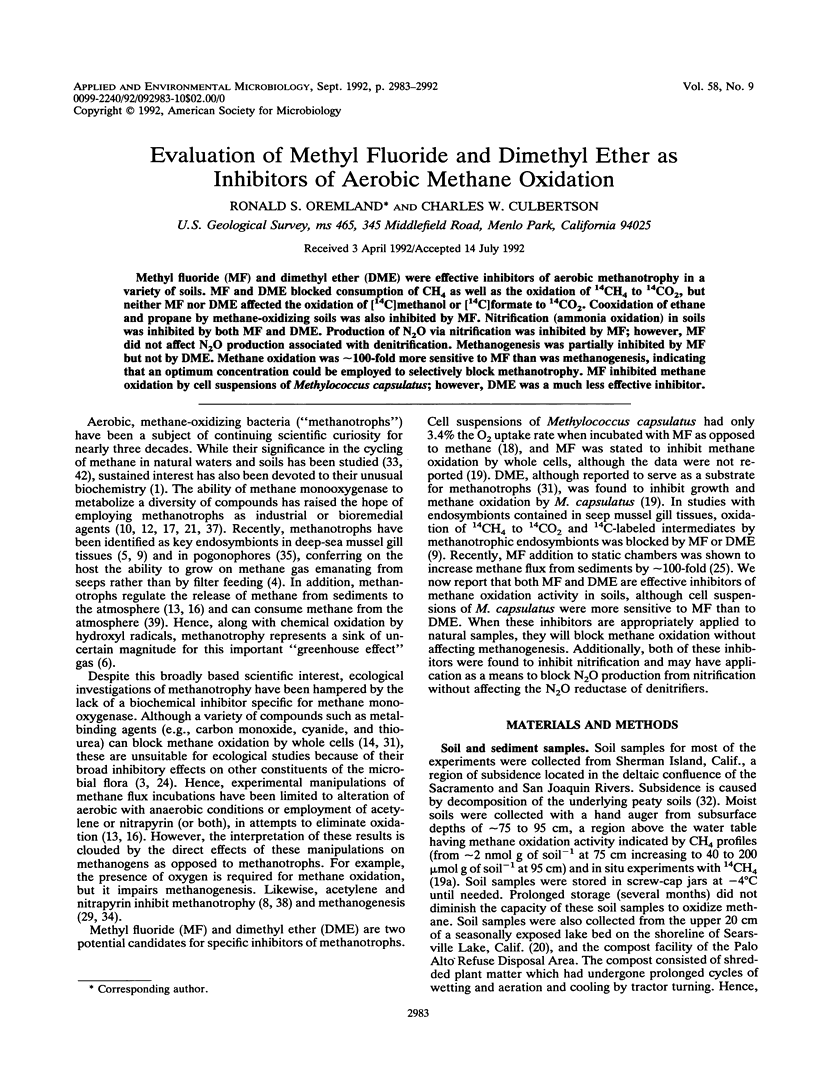
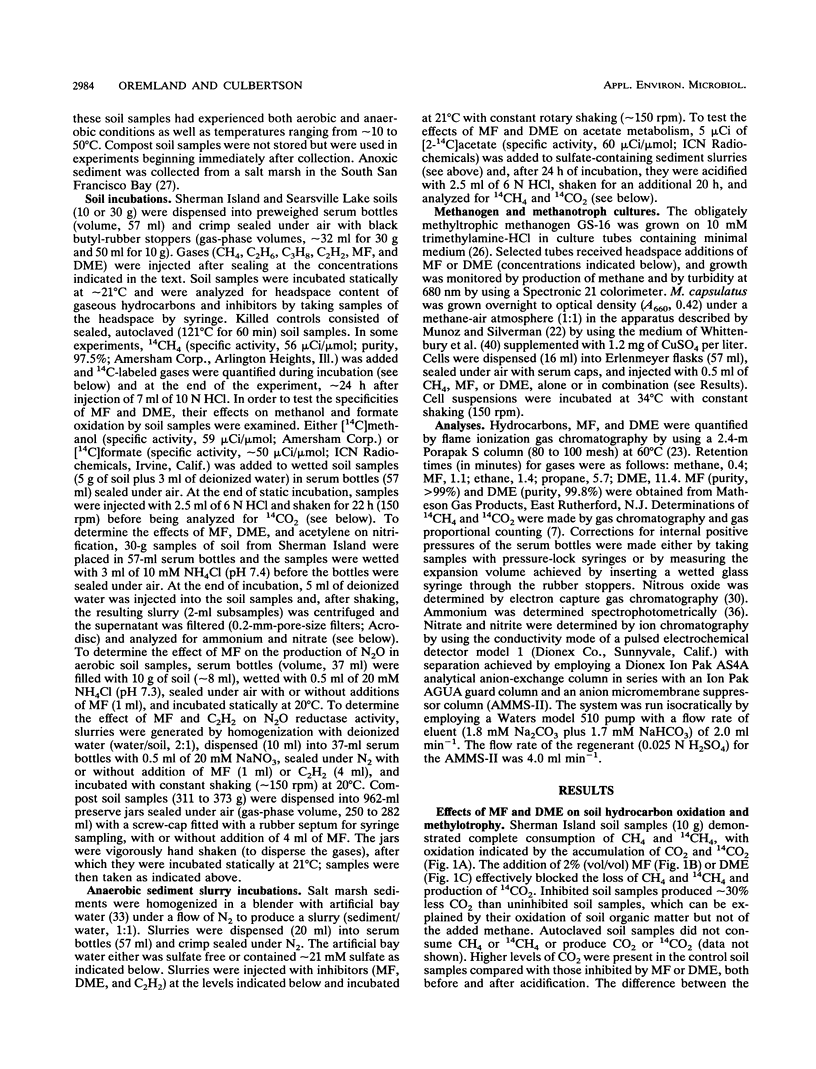
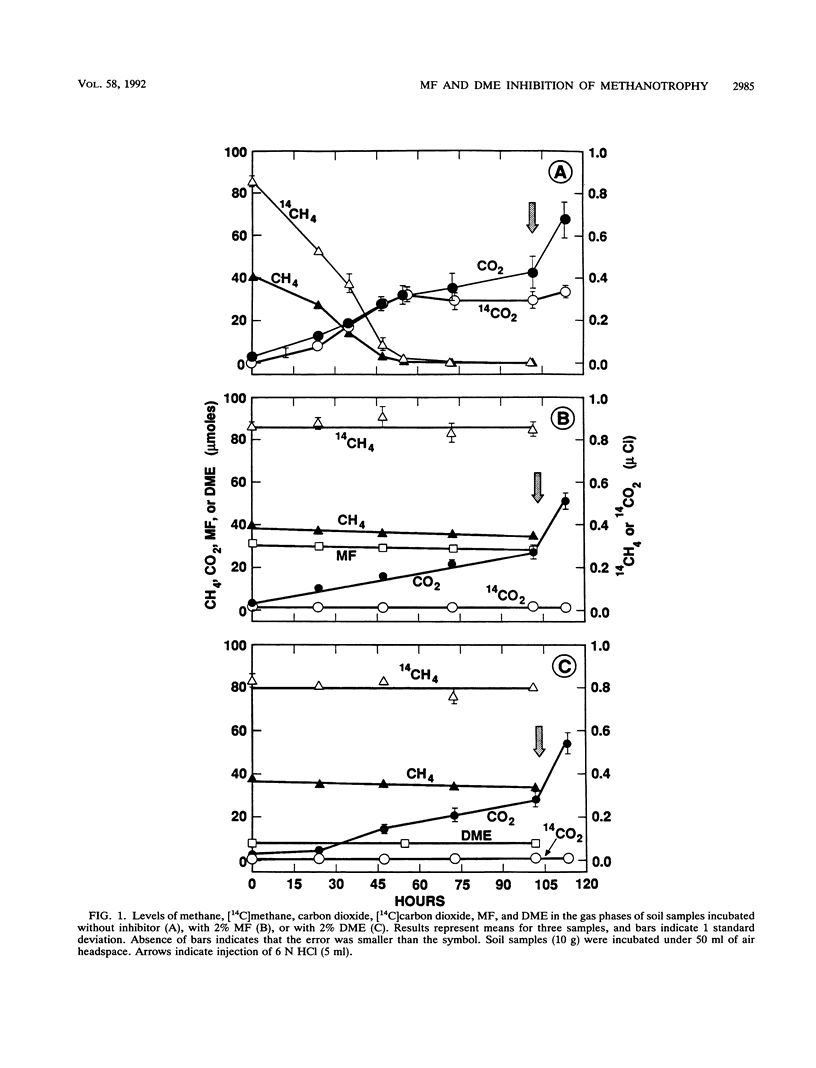
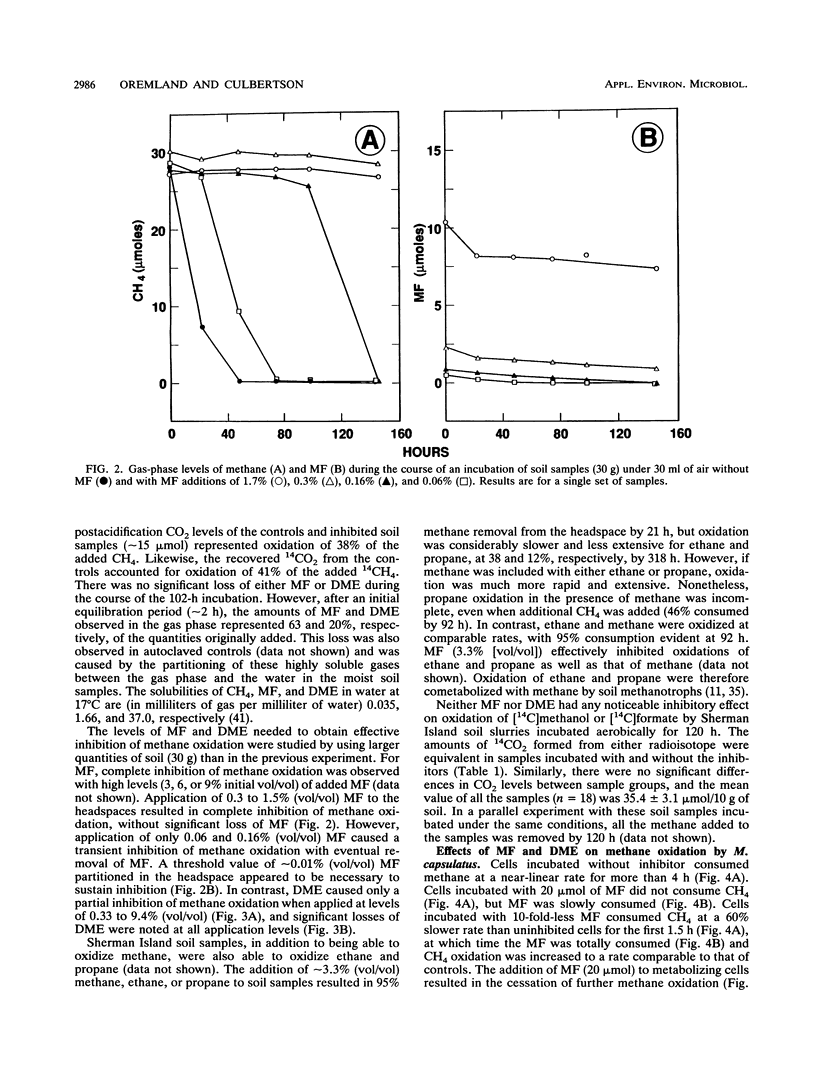
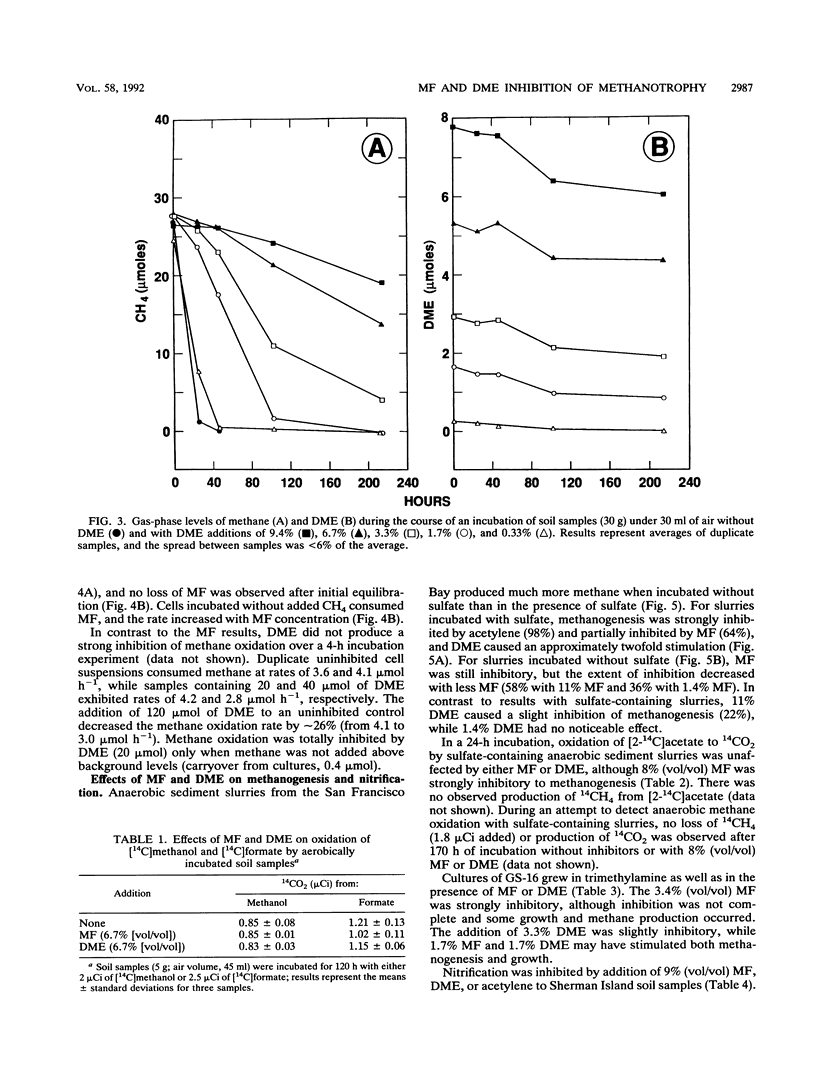
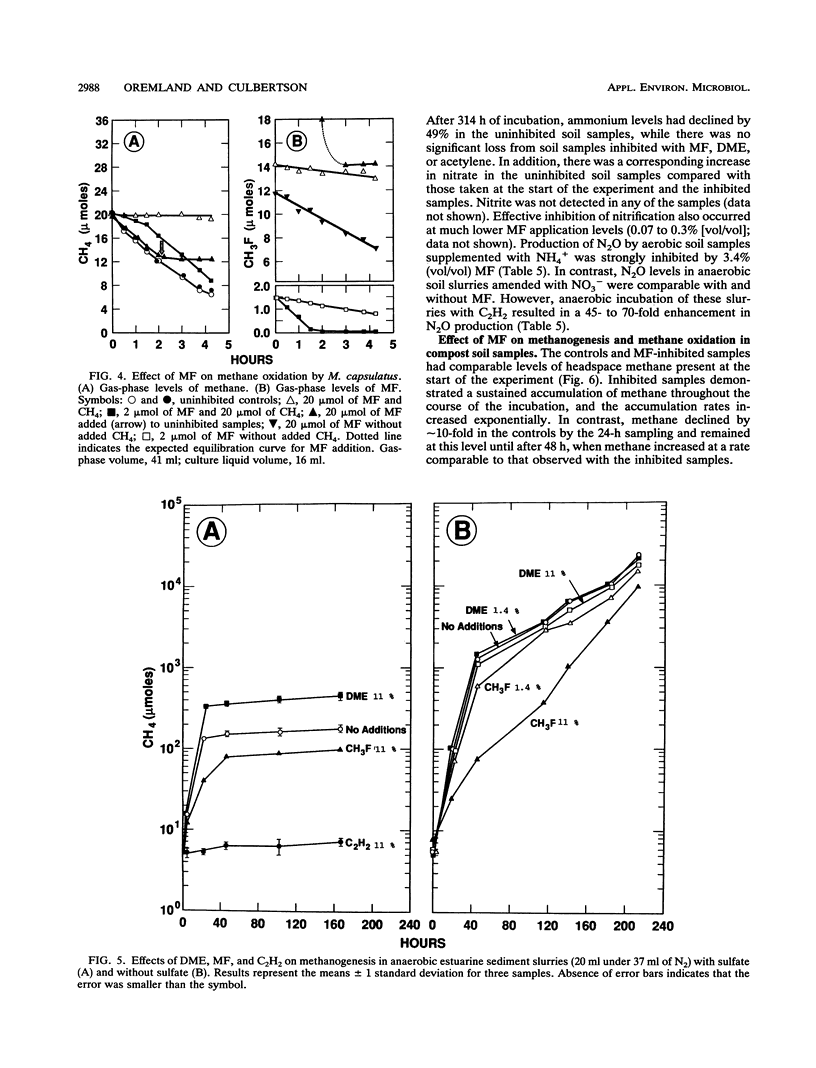
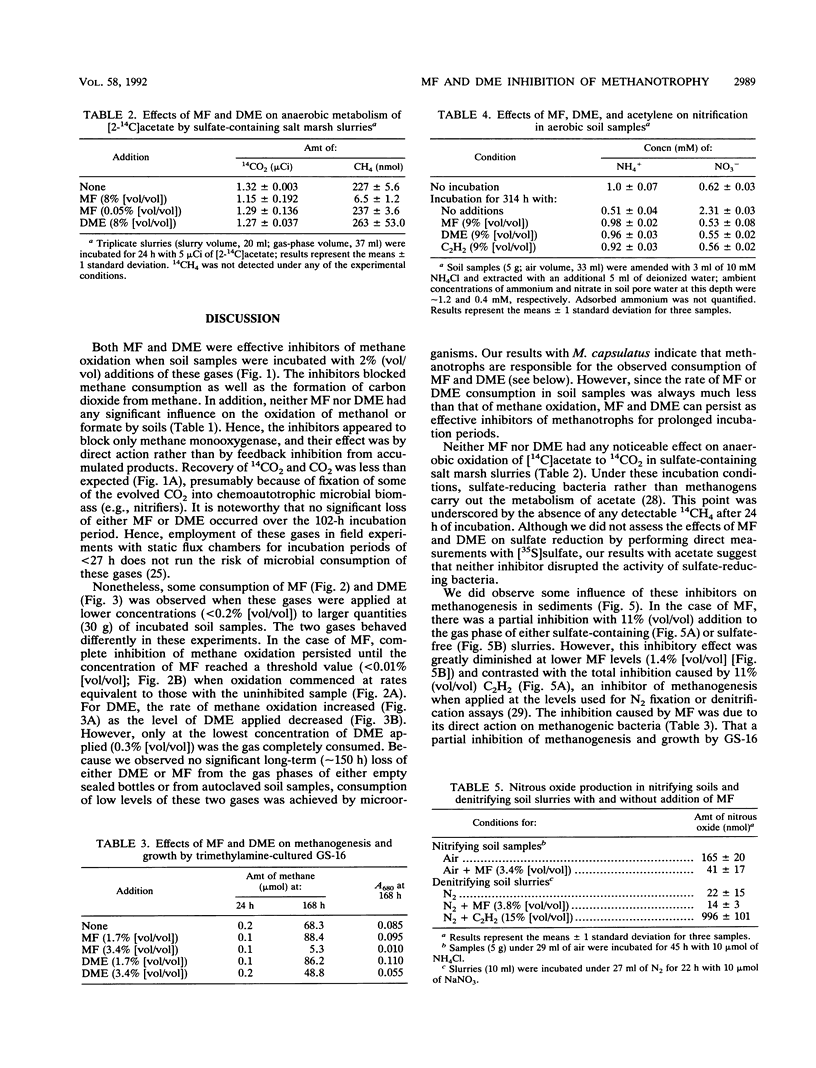
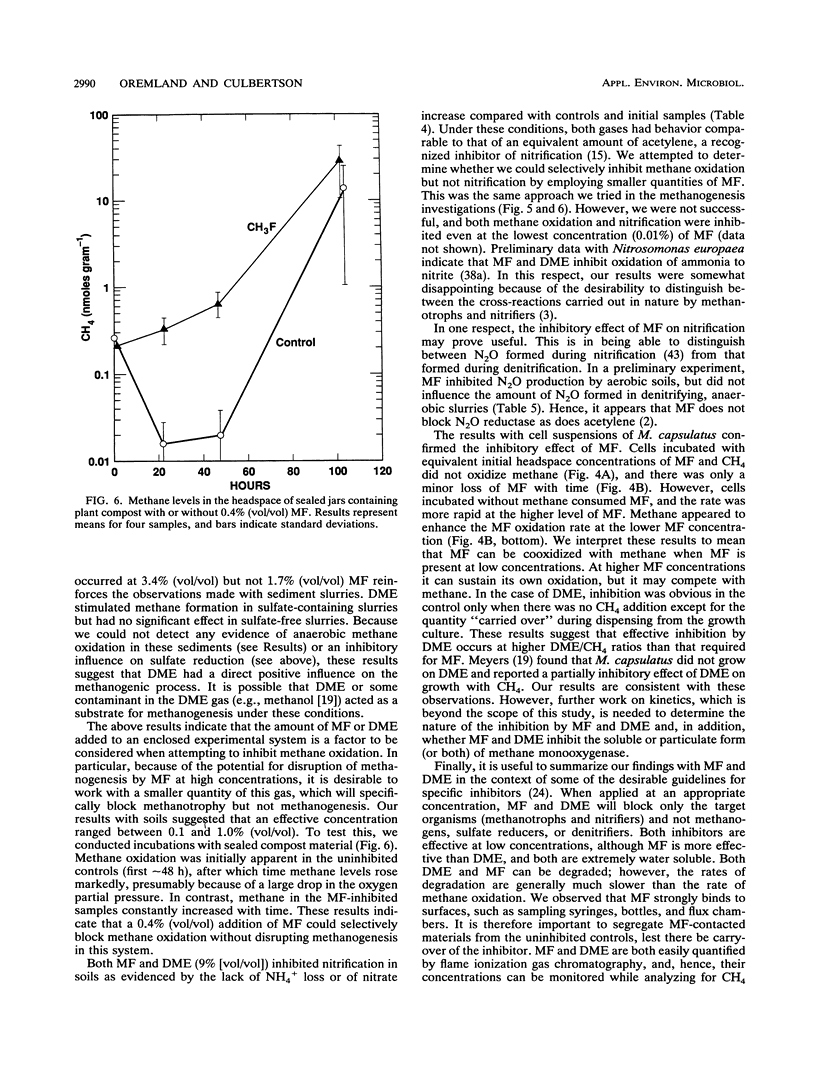
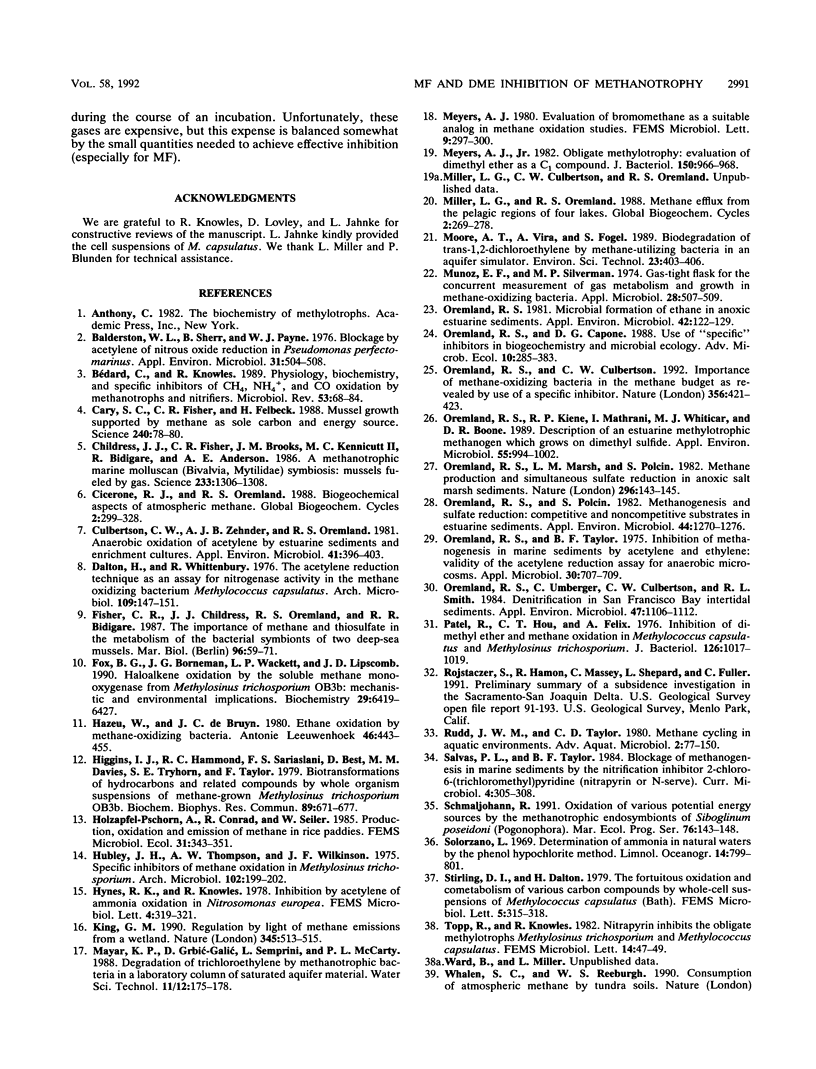
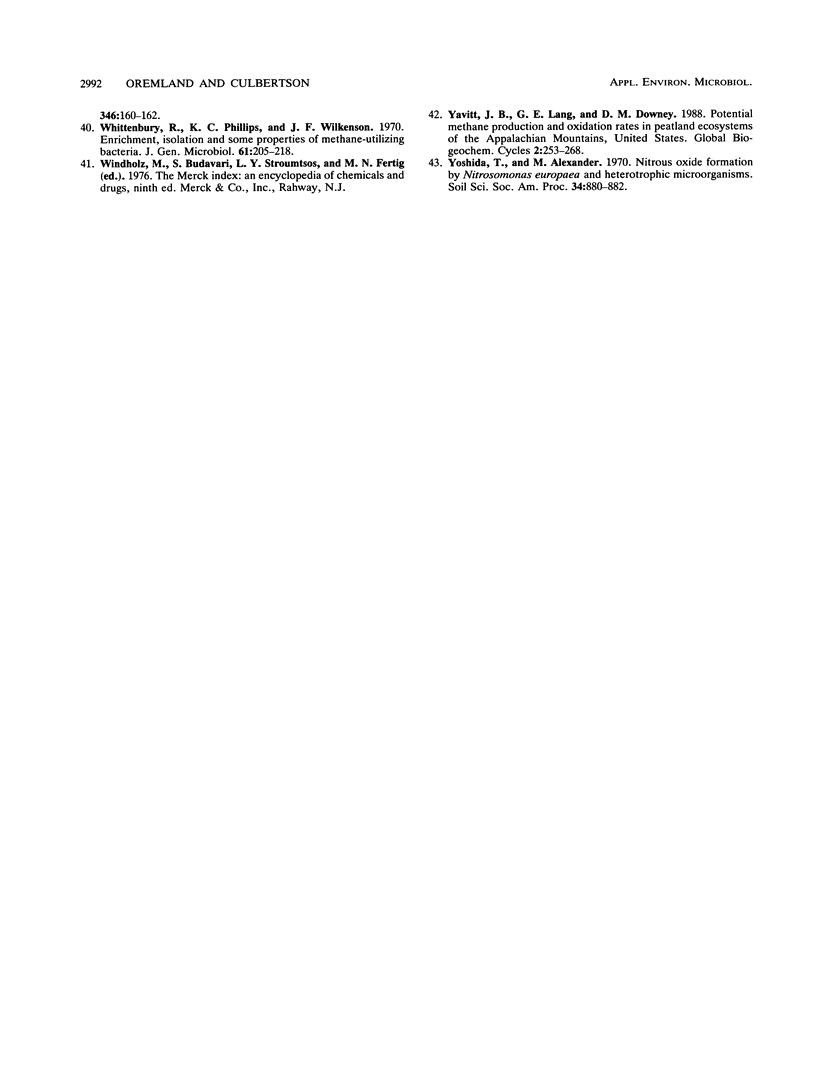
Selected References
These references are in PubMed. This may not be the complete list of references from this article.
- Balderston W. L., Sherr B., Payne W. J. Blockage by acetylene of nitrous oxide reduction in Pseudomonas perfectomarinus. Appl Environ Microbiol. 1976 Apr;31(4):504–508. doi: 10.1128/aem.31.4.504-508.1976. [DOI] [PMC free article] [PubMed] [Google Scholar]
- Bédard C., Knowles R. Physiology, biochemistry, and specific inhibitors of CH4, NH4+, and CO oxidation by methanotrophs and nitrifiers. Microbiol Rev. 1989 Mar;53(1):68–84. doi: 10.1128/mr.53.1.68-84.1989. [DOI] [PMC free article] [PubMed] [Google Scholar]
- Cary S. C., Fisher C. R., Felbeck H. Mussel growth supported by methane as sole carbon and energy source. Science. 1988 Apr 1;240(4848):78–80. doi: 10.1126/science.240.4848.78. [DOI] [PubMed] [Google Scholar]
- Childress J. J., Fisher C. R., Brooks J. M., Kennicutt M. C., 2nd, Bidigare R., Anderson A. E. A methanotrophic marine molluscan (bivalvia, mytilidae) symbiosis: mussels fueled by gas. Science. 1986 Sep 19;233(4770):1306–1308. doi: 10.1126/science.233.4770.1306. [DOI] [PubMed] [Google Scholar]
- Culbertson C. W., Zehnder A. J., Oremland R. S. Anaerobic oxidation of acetylene by estuarine sediments and enrichment cultures. Appl Environ Microbiol. 1981 Feb;41(2):396–403. doi: 10.1128/aem.41.2.396-403.1981. [DOI] [PMC free article] [PubMed] [Google Scholar]
- Fox B. G., Borneman J. G., Wackett L. P., Lipscomb J. D. Haloalkene oxidation by the soluble methane monooxygenase from Methylosinus trichosporium OB3b: mechanistic and environmental implications. Biochemistry. 1990 Jul 10;29(27):6419–6427. doi: 10.1021/bi00479a013. [DOI] [PubMed] [Google Scholar]
- Hazeu W., de Bruyn J. C. Ethane oxidation by methane-oxidizing bacteria. Antonie Van Leeuwenhoek. 1980;46(5):443–455. doi: 10.1007/BF00395825. [DOI] [PubMed] [Google Scholar]
- Higgins I. J., Hammond R. C., Sariaslani F. S., Best D., Davies M. M., Tryhorn S. E., Taylor F. Biotransformation of hydrocarbons and related compounds by whole organism suspensions of methane-grown methylosinus trichosporium OB 3b. Biochem Biophys Res Commun. 1979 Jul 27;89(2):671–677. doi: 10.1016/0006-291x(79)90682-x. [DOI] [PubMed] [Google Scholar]
- Meyers A. J., Jr Obligate methylotrophy: evaluation of dimethyl ether as a C1 compound. J Bacteriol. 1982 May;150(2):966–968. doi: 10.1128/jb.150.2.966-968.1982. [DOI] [PMC free article] [PubMed] [Google Scholar]
- Munoz E. F., Silverman M. P. Gas-tight flask for the concurrent measurement of gas metabolism and growth in methane-oxidizing bacteria. Appl Microbiol. 1974 Sep;28(3):507–509. doi: 10.1128/am.28.3.507-509.1974. [DOI] [PMC free article] [PubMed] [Google Scholar]
- Oremland R. S., Kiene R. P., Mathrani I., Whiticar M. J., Boone D. R. Description of an estuarine methylotrophic methanogen which grows on dimethyl sulfide. Appl Environ Microbiol. 1989 Apr;55(4):994–1002. doi: 10.1128/aem.55.4.994-1002.1989. [DOI] [PMC free article] [PubMed] [Google Scholar]
- Oremland R. S. Microbial formation of ethane in anoxic estuarine sediments. Appl Environ Microbiol. 1981 Jul;42(1):122–129. doi: 10.1128/aem.42.1.122-129.1981. [DOI] [PMC free article] [PubMed] [Google Scholar]
- Oremland R. S., Polcin S. Methanogenesis and sulfate reduction: competitive and noncompetitive substrates in estuarine sediments. Appl Environ Microbiol. 1982 Dec;44(6):1270–1276. doi: 10.1128/aem.44.6.1270-1276.1982. [DOI] [PMC free article] [PubMed] [Google Scholar]
- Oremland R. S., Taylor B. F. Inhibition of methanogenesis in marine sediments by acetylene and ethylene: validity of the acetylene reduction assay for anaerobic microcosms. Appl Microbiol. 1975 Oct;30(4):707–709. doi: 10.1128/am.30.4.707-709.1975. [DOI] [PMC free article] [PubMed] [Google Scholar]
- Oremland R. S., Umberger C., Culbertson C. W., Smith R. L. Denitrification in san francisco bay intertidal sediments. Appl Environ Microbiol. 1984 May;47(5):1106–1112. doi: 10.1128/aem.47.5.1106-1112.1984. [DOI] [PMC free article] [PubMed] [Google Scholar]
- Patel R., Hou C. T., Felix A. Inhibition of dimethyl ether and methane oxidation in Methylococcus capsulatus and Methylosinus trichosporium. J Bacteriol. 1976 May;126(2):1017–1019. doi: 10.1128/jb.126.2.1017-1019.1976. [DOI] [PMC free article] [PubMed] [Google Scholar]
- Whittenbury R., Phillips K. C., Wilkinson J. F. Enrichment, isolation and some properties of methane-utilizing bacteria. J Gen Microbiol. 1970 May;61(2):205–218. doi: 10.1099/00221287-61-2-205. [DOI] [PubMed] [Google Scholar]


